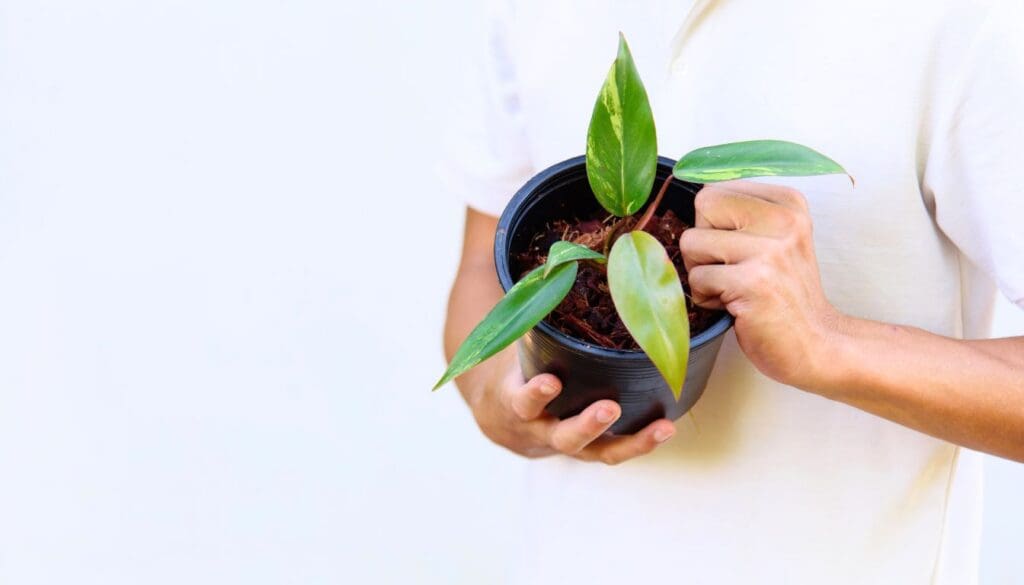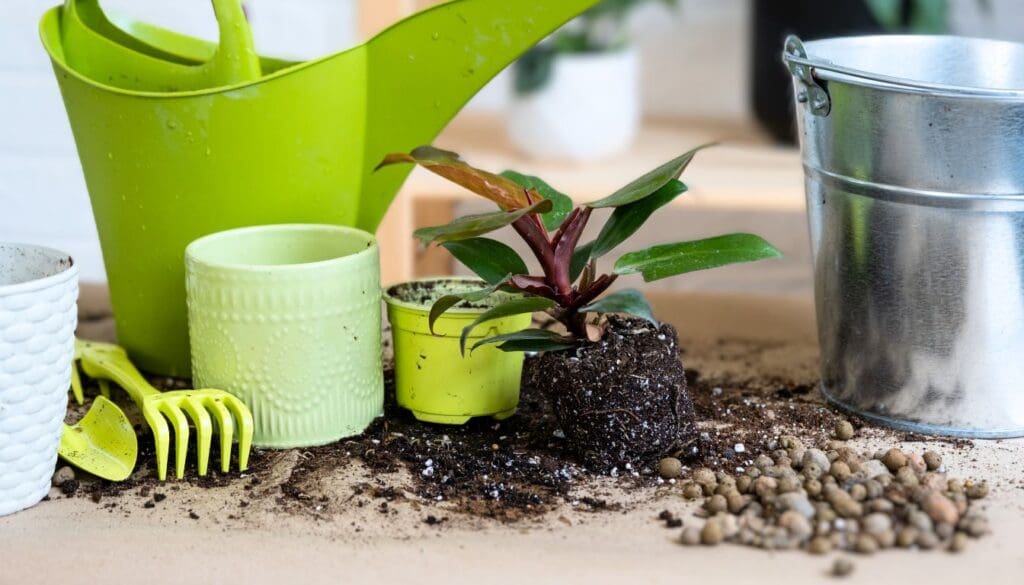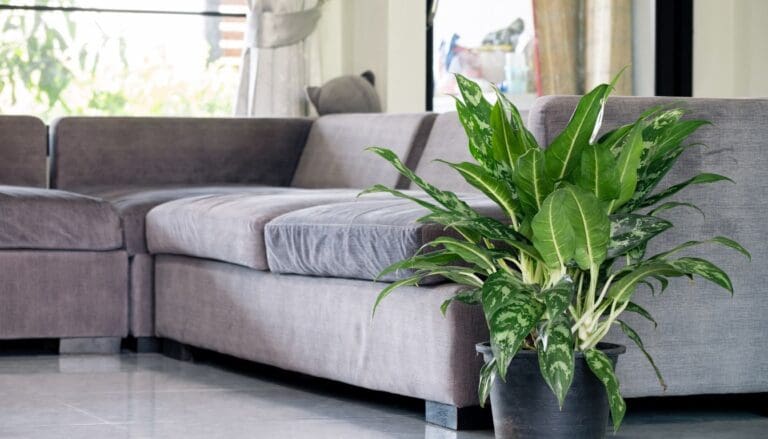Pot For Philodendron: What Size, What Kind & More!
The growth and health of the philodendron can also depend on its pot. This might not be the first thing that comes to your mind when encountering a problem in your philodendron plant, but if everything is correct, this might be the issue that your philodendron is having a hard time.
So in this article, we shall learn what type of pot is best for philodendrons and how you can pick the ideal one.
Terracotta, ceramic, and clay pots are ideal for your philodendron as they allow aeration of the soil and prevent overwatering issues. Choose a pot that is at least 2 inches bigger than the root ball of your philodendron and fill it with fresh soil mix before planting your philodendron.
When choosing the right pot for your philodendron, consider the size of the pot, as it can play a significant role and affect the health of your plant in various ways.
Planting the philodendron in the wrong pot will lead to problems like overwatering, stunted growth, pest infestation, or a root-bound philodendron.
If your philodendron is planted in a small pot, its growth will slow down as it will run short of nutrition quickly. In the case of a large pot, it will hold a lot of water that will lead to root rot.
This article will discuss the importance of using the right pot and the problems you can face if your philodendron is planted in the wrong pot.

Please note: Simplify Plants is reader-supported. Some links in the post are affiliate links and I get a commission from purchases made through links in the post.
Factors to consider while selecting a pot for your philodendron
Choosing the right pot is essential because it holds the philodendron inside it. So, if you make the wrong pot selection, it will affect the plant’s roots, which will, in turn, cause damage to all the other parts.
Before you get a pot for your philodendron, you must consider:
- Size of the pot
- Material of the pot
- The drainage system of the pot
Now, let’s understand these in detail.
Size of the pot
You must not neglect the pot size and keep your philodendron in any random-sized pot.
When you use a bigger pot than your plant’s size, it will hold excess water, keeping the soil soggy and making the roots soft and mushy. This can also lead to root rot.
Sometimes, in a bigger pot, the philodendron will absorb more nutrition and grow bigger. This growth is unhealthy as it can lead to problems like the plant falling off on a side for droopy leaves.
If you keep the philodendron in a smaller pot, it will run out of nutrition fast and become root-bound due to lack of space.
Also read: What Happens If You Put A Plant in A Pot Too Big?
Material of the pot
You must not keep your philodendron in a plastic pot as it is non-porous and will not support proper airflow. This will affect the root health of the plant.
Therefore, it is best to use ceramic, clay, and terracotta pots to allow proper airflow and absorb the excess water from the soil.
The drainage system of the pot
A pot should support proper drainage of excess water from it. When we say proper drainage, we mean the drainage holes of the pot.
Philodendrons prefer the soil to remain slightly moist but not wet. If the pot doesn’t have working drainage holes, excess water will not pass out of the system, making the soil soggy, and the roots will get damaged.
When you get a pot for your philodendron, you must check it to ensure that it has suitable drainage holes. You can also make the drainage holes yourself before you place the philodendron inside the pot.
Do Philodendrons need big pots?

Before we understand the advantages or disadvantages of using a small or big pot, let’s find out what would be the correct sized pot for your philodendron.
There are various pots available in the market that can make it difficult for you to choose from. But ideally, the pot should be one size bigger than the philodendron plant.
If you choose a 4-gallon pot for a 7 or 8-inch tall philodendron, it would be too big for it.
For a 7 or 8-inch tall philodendron, you will require a 1-2 gallon pot. When your philodendron grows bigger, you can transplant it to a pot that is 2 inches bigger than the current pot.
You must not keep the plant in a small pot and keep increasing the size of the pot as per the size of your plant.
Now we will discuss the advantages and disadvantages of using small or large pots.
Advantages and disadvantages of using a big pot
The good thing about using a big pot is that the roots get enough space for more growth and don’t feel restricted.
The roots of the philodendron keep growing if the plant gets sufficient light, water, and fertilizer. So you might see a lot of growth if the philodendron is placed in a big pot.
It is not guaranteed that you can see more or faster growth if you keep the philodendron in a bigger pot. This is because keeping the philodendron in a big pot can bring different problems.
Let’s find out the disadvantages of using a big pot for the philodendron.
Stunted growth
Planting the philodendron in a bigger pot can increase the chances of overwatering, resulting in stunted growth.
When you keep the philodendron in a big pot, the plant will focus more on growing the roots to fill up the pot. So you will see a lot of growth root, but you won’t see much growth in other parts of the philodendron.
If the philodendron gets overwatered, it can lead to root rot, explaining stunted growth in your philodendron. Root rot also invites pests that feed on the sap of your philodendron and weaken the plant further. All these will cause stunted growth in your philodendron.
Also read: Why Is My Philodendron Not Growing? (Causes+How To Fix)
Root rot
In a big pot, the soil will retain excess water. The pot will hold a lot of water, and the soil will remain soggy for long before it finally dries out.
Therefore, when repotting your philodendron, always select the correct-sized pot as getting a bigger pot will lead to overwatering.
Overwatering will further lead to root rot. When there is root rot in your philodendron plant, it will show stunted growth and droopy leaves.
Root rot can damage the roots of the philodendron, making the plant weak, and might cause the plant’s death if you don’t repot the plant in the correct sized pot.
Therefore, to avoid these problems, do not plant your philodendron in a bigger pot.
Also read: How Do You Fix Root Rot On A Philodendron? (Signs, Causes+Solution)
Pest infestation

Pest infestation is common in plants that are overwatered. We already discussed that a bigger pot would hold excess water that will lead to overwatering.
An overwatered philodendron will create the perfect environment for pest infestation. Pests thrive in damp soil, and they attack the roots, stem, and leaves of the plant, making it weak and absorbing all the nutrients.
Advantages and disadvantages of using a small pot
Many people like their houseplants to remain small. If that is true with your philodendron, you can keep it in a small pot.
If you keep the philodendron in a small pot, you must prune the plant to ensure it doesn’t overgrow the pot.
You must prune the roots of the plant. Otherwise, you will have a root-bound plant. The roots of a root-bound plant bundle up inside the pot, and due to lack of space, the roots start displacing the soil.
You will notice the pot starts to crack or start expanding if you have a root-bound philodendron. The roots will also start to come out of the drainage holes if they grow too long.
You will notice slow growth and yellow leaves, and the plant might fall over if it becomes top-heavy due to staying in a small pot.
If you don’t repot a root-bound philodendron, it will eventually die.
As we mentioned, you can prune the plant and reduce its size to keep it in the same pot. However, we would recommend that you repot it.
What is the ideal pot for the philodendron?
When discussing the ideal pot for your philodendron, choosing the right size is a must.
One size larger pot than the plant is the ideal pot for it. The pot must be two inches bigger than the root ball of the plant.
If you want to keep your philodendron healthy and see proper growth in it, you must water the plant correctly and fertilize it during the growing season rather than planting it in the correct-sized pot.
Ensure the pot’s drainage holes are working well so that the pot doesn’t hold extra water.
Choose materials such as clay, terracotta, or ceramic to support proper aeration inside the roots and soil.
When to repot the philodendron?

You must repot your philodendron if you notice that it is root-bound, has root rot, any severe disease, or has not been repotted for long.
Whenever you notice that the roots are coming out of the pot’s drainage holes, the leaves are falling off or becoming droopy, which indicates that you have a root-bound philodendron.
Keeping the plant root-bound for too long will make the plant stressed and might cause the death of the plant. Therefore, you must repot a root-bound philodendron as soon as possible.
Repotting must also be done to save the plant from root rot and other diseases that contaminate the soil. Not repotting the plant can affect the plant again after it has recovered.
Even if the plant is not having a problem, consider repotting it every 2-3 years to get a nutritious soil mix to boost its growth. The soil loses all its nutrition over time and becomes acidic. So repotting rejuvenates the plant by giving it more nutrients with the help of a fresh soil mix.
You must repot the philodendron during the growing season so that the plant doesn’t get stressed. Try to avoid repotting in winter as the plant can get shocked due to the low temperatures.
Final thoughts
If you want to choose the right pot for your philodendron, you need to consider three factors – size, material, and drainage.
You need to keep the following three points in mind:
- Use a pot that is one size bigger than the philodendron.
- Use terracotta, ceramic, or clay pots to support airflow in the soil and roots.
- Make drainage holes under the pot before planting the philodendron inside it.
Also read: How Fast Do Philodendrons Grow? (+How To Grow The Faster)
Ref: Wikipedia.
Recommended Garden Supplies
| Product Image | Our Recommended Gardening Supplies | Check Offers! |
|---|---|---|
Top Top
Top
Top
Top
Top
Top
Top
Top | rePotme Houseplant and Tropical Classic Potting Soil Mix | Check Offer On Amazon |
 Top
Top
Top
Top
Top
Top
Top
Top | Espoma Organic Indoor Plant Food | Check Offer On Amazon |
 Top
Top
Top
Top
Top
Top
Top
Top | GooingTop LED Grow Light 6000K Full Spectrum Clip Plant Growing Lamp | Check Offer On Amazon |
 Top
Top
Top
Top
Top
Top
Top
Top | Soil Moisture Meter | Check Offer On Amazon |
 Top
Top
Top
Top
Top
Top
Top
Top | Govee Hygrometer Thermometer, Bluetooth Enabled! | Check Offer On Amazon |
 Top
Top | LEVOIT Humidifiers for Large Room(Best For Plants) | Check Offer On Amazon |
 Top
Top
Top
Top
Top
Top
Top
Top | Upgraded DIY Automatic Drip Irrigation Kit, 15 Potted Houseplants Support | Check Offer On Amazon |
 Top
Top
Top
Top
Top
Top
Top
Top | Stainless Steel Heavy Duty Gardening Tool Set | Check Offer On Amazon |
 Top
Top
Top
Top
Top
Top
Top
Top | Bonide Insecticidal Soap | Check Offer On Amazon |
 Top
Top
Top
Top
Top
Top
Top
Top | Bonide 32 oz Spray Neem Oil for Organic Gardening | Check Offer On Amazon |
 Top
Top
Top
Top
Top
Top
Top
Top | Garden Safe Fungicide | Check Offer On Amazon |






